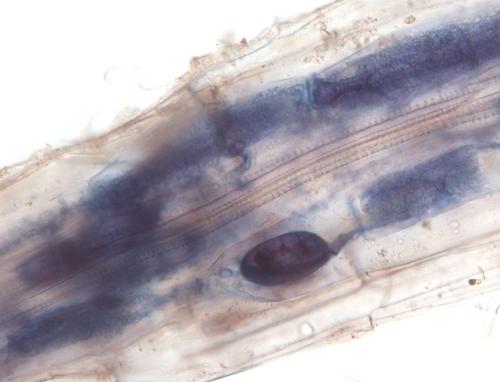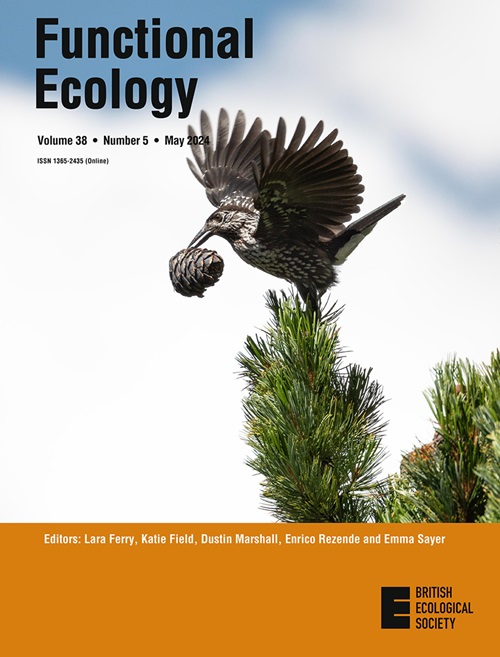The functionality of arbuscular mycorrhizal networks across scales of experimental complexity and ecological relevance
IF 5.1
1区 环境科学与生态学
Q1 ECOLOGY
引用次数: 0
Abstract
Read the free Plain Language Summary for this article on the Journal blog.





跨越实验复杂性和生态相关性尺度的节肢菌根网络的功能性
地球上最普遍的共生关系之一是大多数陆生植物与丛枝菌根真菌(AM)之间形成的共生关系。通过这种亲密关系,AM 真菌将土壤养分转移给植物宿主,以换取光合作用固定的碳资源。有一种假设认为,这种营养互惠关系在进化过程中是稳定的,因为合作双方都能控制资源交换,并能根据哪一方提供的回报最高来选择合作伙伴。然而,在自然界中,植物-AM 共生体面临着大量额外的生物和非生物相互作用,这可能会影响共生体之间碳-营养交换的调节。此外,AM 真菌的根外菌丝组成了地下网络,这些网络可能是互动的,也可能是物理连接的,即常见的菌根网络(CMN)。这些网络可以连接相邻的植物,从而进一步影响整个网络的资源分配。这些复杂层次如何相互作用,影响植物和 AM 真菌之间的资源调控和分配,实验设计通常不会考虑。在此,我们回顾了AM共生中的资源分配,从使用轴向根器官培养物的还原性实验系统的证据扩展到包含多个相邻植物与其他共生共生体的复杂系统。随着实验设计规模的扩大和生态相关复杂性的增加,植物与其AM共生体之间的碳-营养交换越来越受到更广泛生态环境的干扰,例如CMN中错综复杂的植物-真菌相互作用或共生生物的存在。在期刊博客上免费阅读本文的通俗摘要。
本文章由计算机程序翻译,如有差异,请以英文原文为准。
求助全文
约1分钟内获得全文
求助全文
来源期刊

Functional Ecology
环境科学-生态学
CiteScore
9.00
自引率
1.90%
发文量
243
审稿时长
4 months
期刊介绍:
Functional Ecology publishes high-impact papers that enable a mechanistic understanding of ecological pattern and process from the organismic to the ecosystem scale. Because of the multifaceted nature of this challenge, papers can be based on a wide range of approaches. Thus, manuscripts may vary from physiological, genetics, life-history, and behavioural perspectives for organismal studies to community and biogeochemical studies when the goal is to understand ecosystem and larger scale ecological phenomena. We believe that the diverse nature of our journal is a strength, not a weakness, and we are open-minded about the variety of data, research approaches and types of studies that we publish. Certain key areas will continue to be emphasized: studies that integrate genomics with ecology, studies that examine how key aspects of physiology (e.g., stress) impact the ecology of animals and plants, or vice versa, and how evolution shapes interactions among function and ecological traits. Ecology has increasingly moved towards the realization that organismal traits and activities are vital for understanding community dynamics and ecosystem processes, particularly in response to the rapid global changes occurring in earth’s environment, and Functional Ecology aims to publish such integrative papers.
 求助内容:
求助内容: 应助结果提醒方式:
应助结果提醒方式:


